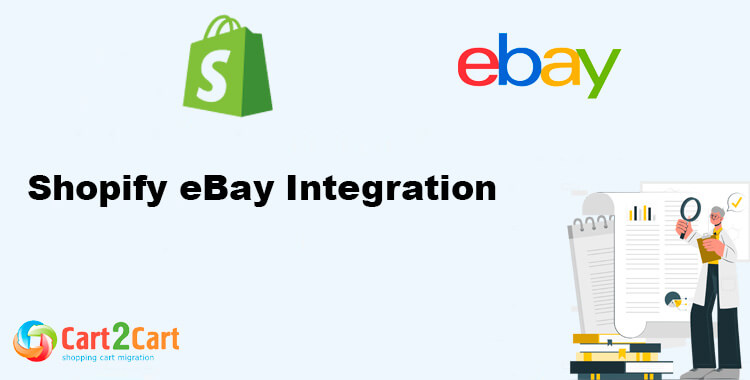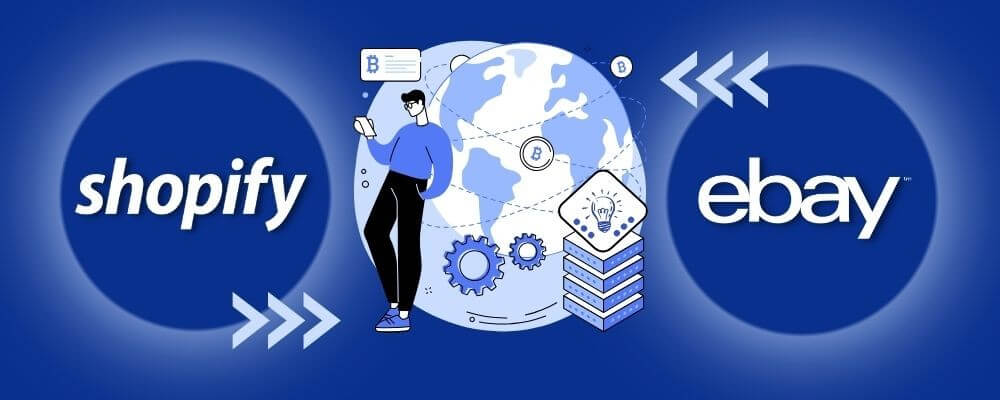 Integrating Shopify with eBay isn't just about convenience—it's about scaling your business effectively. By combining Shopify's robust e-commerce features with eBay's expansive marketplace, you can reach a broader audience without the hassle of managing multiple sales channels separately. Whether you have a single eBay store or manage multiple eBay accounts, this integration allows you to maintain brand consistency while also adapting to the unique demands of eBay's marketplace, ultimately leading to more efficient operations and higher profitability. For businesses considering a shopping cart migration service, this integration can streamline the process, ensuring a seamless transition between platforms.
Integrating Shopify with eBay isn't just about convenience—it's about scaling your business effectively. By combining Shopify's robust e-commerce features with eBay's expansive marketplace, you can reach a broader audience without the hassle of managing multiple sales channels separately. Whether you have a single eBay store or manage multiple eBay accounts, this integration allows you to maintain brand consistency while also adapting to the unique demands of eBay's marketplace, ultimately leading to more efficient operations and higher profitability. For businesses considering a shopping cart migration service, this integration can streamline the process, ensuring a seamless transition between platforms.
Why Integrate Shopify with eBay?
Integrating Shopify with eBay offers a strategic advantage for online merchants looking to expand their market reach and streamline their operations. eBay, with its vast and diverse user base, provides an opportunity to tap into a broader audience that may not be reached through a standalone Shopify store. This integration allows Shopify store owners to import eBay listings seamlessly, leveraging eBay’s established marketplace to attract new customers while maintaining the branding and customization options that Shopify offers. By using the eBay Shopify app, businesses can sell on both platforms, increasing their visibility, potentially boosting sales, and driving revenue growth. Beyond expanding market reach, the integration simplifies the management of multiple sales channels. Instead of juggling separate inventories and order management systems, merchants can control their eBay listings and Shopify store from a single, unified interface. This streamlining of operations not only saves time but also reduces the risk of errors, such as overselling or inconsistent pricing. Ultimately, integrating Shopify with eBay allows businesses to operate more efficiently and effectively, ensuring that they can focus on delivering a great customer experience across both platforms.Setting Up Shopify eBay Integration
1. Getting Started with the Integration
Before you can start selling on eBay through Shopify, you need to set up the integration. Here’s how:- Install the eBay App: Log in to your Shopify account, go to the Shopify App Store, and install the official eBay app.
- Connect Your eBay Account: Once the app is installed, connect your eBay account to Shopify by following the prompts.
- Configure Settings: Adjust settings such as pricing rules, inventory management, and order fulfillment to suit your business needs.
2. Syncing Products Between Shopify and eBay
The next step is syncing your products between Shopify and eBay. This ensures that your inventory is consistent across both platforms. To sync your products:- Map Product Categories: Align Shopify product categories with eBay categories.
- Adjust Pricing: Set rules to adjust pricing on eBay if necessary, for example, adding a markup to cover eBay fees.
- Sync Inventory: Enable automatic inventory synchronization to prevent overselling.

3. Managing Orders and Fulfillment
Once your products are synced, managing orders from both platforms becomes seamless. You can:- Centralize Orders: View and manage all your orders from Shopify's admin panel.
- Automate Fulfillment: Automate the fulfillment process using Shopify’s shipping features or third-party apps.
- Handle Returns: Manage returns and customer inquiries for both platforms from one location.
4. Optimizing Your eBay Listings
To maximize the benefits of Shopify eBay integration, it's important to optimize your eBay listings:- Use High-Quality Images: Ensure your product images are clear and meet eBay’s guidelines.
- Craft Compelling Titles: Write descriptive and keyword-rich titles to improve search visibility on eBay.
- Detailed Descriptions: Provide detailed and accurate product descriptions to reduce customer inquiries and returns.
Pros and Cons of Shopify eBay Integration
Integrating Shopify with eBay offers a strategic advantage for online sellers looking to expand their market presence. One of the main benefits is the ability to reach a wider audience; eBay's extensive user base provides access to millions of potential customers worldwide, enhancing visibility and increasing sales opportunities on the eBay marketplace. The integration also streamlines operations, allowing sellers to manage multiple eBay accounts, listings, inventory, and orders directly from Shopify’s centralized platform. This efficiency reduces the complexity of running multi-channel sales, making it easier to maintain consistency across both platforms. However, there are some drawbacks to consider. eBay’s listing and selling fees can eat into profit margins, especially for small businesses. Additionally, managing two platforms simultaneously, even with integration, can still be complex and time-consuming, particularly if issues arise with synchronization or inventory management. Sellers may also face limitations in customizing their eBay listings, as eBay's platform offers less flexibility compared to Shopify, which might hinder brand presentation.Advantages
- Wide Audience: Access millions of potential customers on eBay.
- Efficiency: Manage multiple channels from a single platform.
- Increased Sales: Leverage the strengths of both Shopify and eBay.
Disadvantages
- Fees: eBay charges listing and selling fees, which can add up.
- Complexity: Managing multiple platforms can be challenging for some sellers.
- Limited Customization: eBay's listing format may not fully reflect your brand identity.
Table: Shopify vs. eBay Selling Features
| Feature | Shopify | eBay |
| Customization | High | Low |
| Audience Size | Smaller niche | Large general audience |
| Listing Fees | None | Listing and selling fees apply |
| Inventory Management | Centralized in Shopify | Requires integration for multi-channel |
| Fulfillment Options | Shopify shipping and third-party apps | eBay shipping services available |
Best Practices for Shopify eBay Integration
- Regularly Update Inventory: Regular updates prevent overselling and ensure inventory levels are accurate.
- Monitor Performance: Use Shopify’s analytics and eBay’s seller tools to monitor sales and make data-driven decisions.
- Customer Service: Provide excellent customer service on both platforms to build a positive reputation and encourage repeat business.







